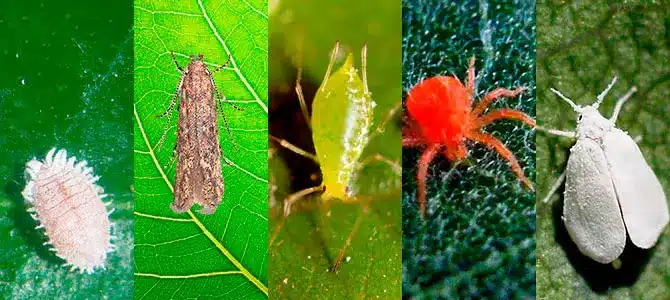
PESTS AND CANNABIS: HOW TO AVOID THEM
- Published on June 19, 2024

Hello, growers of good weed! If you're here, you've probably encountered one of the biggest headaches in growing cannabis: pests. Yes, those little invaders that can turn your precious garden into a battlefield. But don't worry, today I bring you some tips and tricks to prevent pests and keep your plants happy and bug-free.
BUY THE BEST CBD PRODUCTS HERE
1. Know your Enemies
First, it is important to know who are the most common intruders that can attack your crop:
- Red spider: These little guys are experts at wreaking havoc on leaves, leaving them yellow and covered in cobwebs.
- Aphids: They reproduce quickly and suck the sap from plants, weakening them.
- thrips: Small and fast, thrips can cause spots and deformations on leaves.
- White fly: These flying insects also feed on sap and can transmit diseases.
2. Keep your Space Clean
Cleaning is essential to prevent pests. Be sure to:
- Clean tools: Use alcohol or disinfectant to clean your tools before and after using them.
- Remove plant debris: Dead leaves and other plant debris can attract pests.
- Ventilate the space: Pests love humid, unventilated environments. Keep the air moving with fans.
3. Crop Rotation
Don't always plant the same thing in the same place! Pests have memories and can return to the same place if they know they will find their favorite food. Alternating the type of plants you grow can confuse them and break their life cycle.
4. Use of Natural Products
If pests have already made an appearance, do not immediately resort to chemical pesticides. Here are some natural options:
- neem oil: A great ally to combat red spiders, aphids and more. Mix with water and spray your plants.
- Potassium soap: Safe and effective against a variety of pests.
- Garlic and onion: Make a garlic and onion tea (yes, it sounds weird but it works) and spray your plants.
5. Introduce Natural Predators
Did you know that some creatures can be your allies in this war? Consider introducing:
- ladybugs: They are voracious predators of aphids.
- Amblyseius: A mite that feeds on thrips and red spiders.
- parasitic wasps: They attack the larvae of certain pests.
6. Regular Monitoring
Checking your plants regularly is key. Look at the leaves, especially the undersides, where pests often hide. Use a magnifying glass if necessary. Detecting an infestation early can save your harvest.
7. Cultivation Strategies
Some techniques can help you keep pests at bay:
- Companion plants: Some plants, such as basil and mint, can repel certain pests.
- Diatomaceous earth circles: Sprinkle around your plants to keep crawling insects away.













